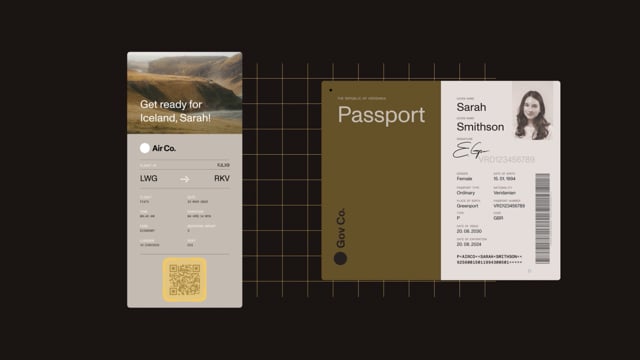Barcode OCR vs. traditional barcode scanners: What’s the difference?
Learn the key differences between barcode OCR and traditional barcode scanners. Discover how Nutrient .NET SDK enables smarter, automated barcode processing.
Embed TWAIN/WIA scanning and barcode intelligence into your .NET applications. Automate image capture, recognition, and export with precise control and developer-first APIs.

Capture documents using TWAIN or WIA devices with full control over resolution, format, and compression.
Detect and decode barcodes at scan time — even in poor conditions.
Handle acquisition, cleanup, and export in a single automated workflow.
Save to PDF/A, searchable PDF, TIFF, or any supported image format.
TWAIN AND WIA SCANNING
Integrate high-volume scanning into .NET desktop apps using TWAIN and WIA support. Automate every step — from source selection to final output — in code.

Communicate with both 32-bit and 64-bit TWAIN/WIA drivers from your .NET application.
Configure DPI, color mode, compression, and UI behavior for every scan.
Scan multiple documents in sequence with built-in post-processing hooks.
Save directly to PDF/A, searchable PDF, multipage TIFF, JPEG 2000, and more.
BARCODE READING AND WRITING
Add barcode recognition and generation to your .NET workflows. Detect 1D/2D codes, extract values, and generate barcodes on the fly.

Read QR, Data Matrix, PDF417, Aztec, Code 128, and more — even if damaged or skewed.
Scan barcodes from images, PDFs, and scanned documents in more than 100 file types.
Generate 1D and 2D barcodes and embed them into PDFs or image files.
Extract the value, checksum, confidence, angle, and other metadata from every scan.
Nutrient’s Document Web Services (DWS) platform offers cloud-native APIs that support every stage of the document lifecycle — from rendering a single PDF in the browser, to high-volume processing and automation.
TWAIN and WIA are both Windows imaging protocols, but they differ in device support and control options:
For the most control and compatibility with scanners, we recommend TWAIN.
WIA includes a TWAIN compatibility layer so TWAIN-aware applications can connect to WIA devices. However, it has limitations:
If your device supports both TWAIN and WIA, using TWAIN directly will offer better performance and flexibility.
Yes. Nutrient provides web scanning support through DocuVieware, our HTML5 document viewer and toolkit.
PROVEN AT SCALE
Replaced paper and email with Nutrient Workflow to automate multilevel approvals across six Latin American offices, processing 236 asset requests.
Renders multipage PDFs and signature tags with Nutrient, keeping 200 million users in 188 countries moving at the speed of eSignature.
Empowers 34,000 pilots to view, annotate, and sign 90‑page flight releases on iPad using Nutrient iOS SDK, saving minutes — and money — on every flight.
FOR DEVELOPERS
Integrating barcode scanning capabilities into your applications can significantly enhance operational efficiency and accuracy. This section will delve into the essentials of barcode scanner SDKs to guide you through this integration.
A barcode scanner SDK (software development kit) is a collection of tools and APIs that enables developers to embed barcode scanning functionalities into their software applications. This allows devices equipped with cameras, such as smartphones and tablets, to read and process various barcode symbologies, facilitating tasks like inventory management, asset tracking, and point-of-sale operations.
When selecting the appropriate barcode scanner SDK, consider the following factors:
Various barcode scanning tools are available, each offering distinct features:
Choosing Nutrient’s barcode scanner SDK offers several advantages:
While other barcode scanning tools may offer basic functionalities, Nutrient (formerly PSPDFKit) stands out with its advanced features, high performance, and focus on user experience. Its design prioritizes ease of use and seamless integration, making it a robust choice for applications aiming to enhance document interaction and data collection processes.
Integrating a barcode scanner SDK into your application is a strategic move to boost functionality and user satisfaction. By carefully evaluating your needs and exploring available options, you can select a solution that not only meets your current requirements, but also supports your application’s future growth and evolution.